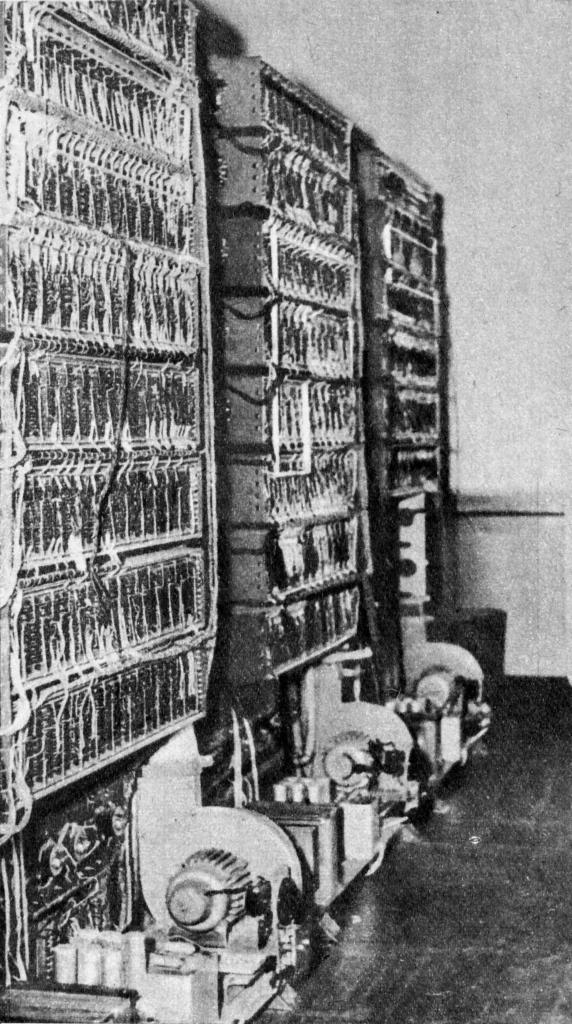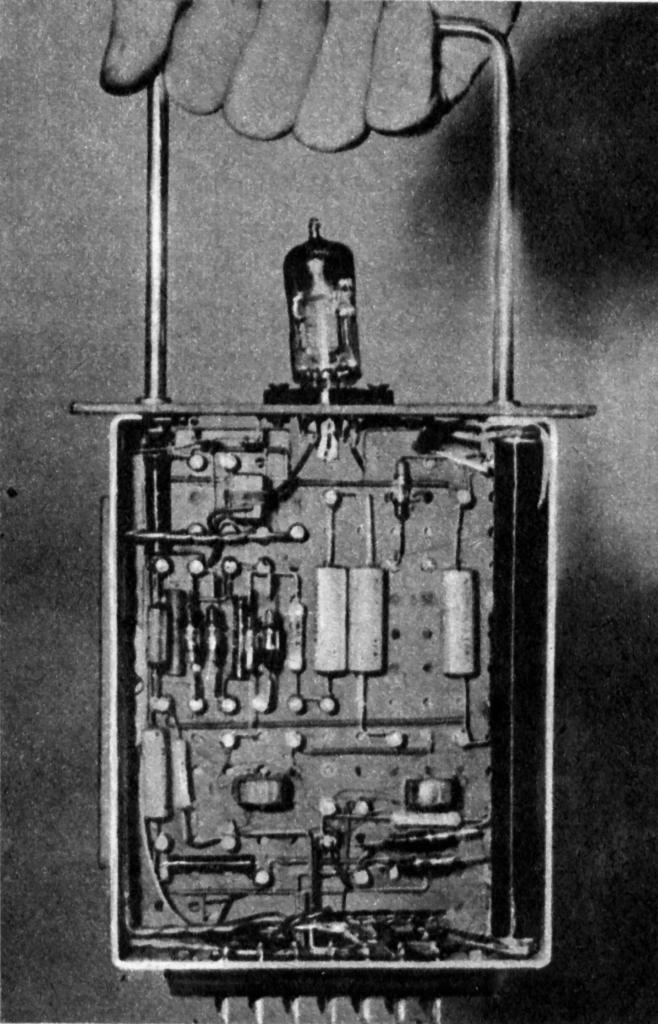XYZ (computer) on:
[Wikipedia]
[Google]
[Amazon]
XYZ was the first Universal Digital Machine from the family of early computers built and launched in Poland in 1958. It was ahead of by a few months, while the earlier was not fully launched.Konstrukcje polskie: XYZ, Empacher A.B.
Maszyny liczą same?
/ Adam B. Empacher / Katalog HINT, Wiedza Powszechna, 1960, s. 114-122 (in Polish)
XYZ bez bebna.jpg

 *Organization:
**single-address, dynamic serial computer with circuit control
**binary arithmetic, notation of numbers sign-module
**word length: 36 bits
*speed:
**650–4500 additions per second (approximately 1000 average)
**250–500 multiplications per second (350 average)
**
*Organization:
**single-address, dynamic serial computer with circuit control
**binary arithmetic, notation of numbers sign-module
**word length: 36 bits
*speed:
**650–4500 additions per second (approximately 1000 average)
**250–500 multiplications per second (350 average)
**
Photo and description
* PTI Historical Section
Short description of the XYZ-I programmable digital machine
historiainformatyki.pl Polish inventions Science and technology in Poland 1950s computers
Maszyny liczą same?
/ Adam B. Empacher / Katalog HINT, Wiedza Powszechna, 1960, s. 114-122 (in Polish)
Construction
XYZ computer was built and launched in Warsaw at ul. Śniadeckich 8, at the premises of the Bureau of Calculations and Programs of the Mathematical Apparatus Department of thePolish Academy of Sciences
The Polish Academy of Sciences (, PAN) is a Polish state-sponsored institution of higher learning. Headquartered in Warsaw, it is responsible for spearheading the development of science across the country by a society of distinguished scholars a ...
(later the Institute of Mathematical Machines). The team was led by professor .
XYZ was a laboratory model of a utility machine; the series was created on the basis of this computer.
The logical organization was modeled on the simplified IBM 701
The IBM 701 Electronic Data Processing Machine, known as the Defense Calculator while in development, was IBM’s first commercial scientific computer and its first series production mainframe computer, which was announced to the public on May 2 ...
, but the electronics were based on the dynamic flip-flops of the M-20 machine, requiring twice as few lamps. The design of the flip-flops and gates was derived from EMAL, but the vacuum diodes were replaced with germanium ones. The working memory was also derived from the EMAL machine after the improvement. It was a dynamic serial computer that computes in binary arithmetic.
The machine initially had no permanent memory, only RAM based structurally on ultrasound delay in a mercury-filled tubes. It was later expanded with a drum memory, an input-output system implemented through a primitive control console and a card reproducer (later a tape reader/perforator).
The basic fields of use of XYZ were mathematical calculations, and artillery conversion factors for the needs of the army.Bartłomiej Kluska, Bartosz Rozwadowski: ''Bajty polskie''. Sosnowiec: 2014, s. 3. . Programmer wrote a program for entertainment on it in 1960 - a tic-tac-toe
Tic-tac-toe (American English), noughts and crosses (English in the Commonwealth of Nations, Commonwealth English), or Xs and Os (Canadian English, Canadian or Hiberno-English, Irish English) is a paper-and-pencil game for two players who ta ...
game, using an oscilloscope to present the course of the game. XYZ led to his own win or a draw, because the program includes all the strategies for its conduct. Another demonstrative program written for XYZ was an animation of a dog peeing on a tree (also shown on the oscilloscope screen) created for the visit of the film crew, creating material about the first Polish computer.
Specifications

 *Organization:
**single-address, dynamic serial computer with circuit control
**binary arithmetic, notation of numbers sign-module
**word length: 36 bits
*speed:
**650–4500 additions per second (approximately 1000 average)
**250–500 multiplications per second (350 average)
**
*Organization:
**single-address, dynamic serial computer with circuit control
**binary arithmetic, notation of numbers sign-module
**word length: 36 bits
*speed:
**650–4500 additions per second (approximately 1000 average)
**250–500 multiplications per second (350 average)
**Clock generator
A clock generator is an electronic oscillator that produces a clock signal for use in synchronizing a circuit's operation. The output clock signal can range from a simple symmetrical square wave to more complex arrangements. The basic parts tha ...
: approx. 680 kHz
*memory:
**mercury working memory:
***capacity: 2.25 KiB - 512 words (32 pipes of 576 bits)
***average access time : 0.4 ms
**drum
***fixed heads
***capacity: 36 KiB (64 tracks of 128 words)
***average access time: 20 ms
*External devices: reader and perforator card
*Technology: 400 electron tubes and 2000 diodes
Programming languages
* internal language of the machine * simple PROBIN assembler * *SAKO
Sako Limited (natively ) is a Finnish firearm and ammunition manufacturer located in Riihimäki, Tavastia Proper in southern Finland. It also has owned the Tikka brand of bolt-action rifles since 1983, and is now owned by the Italian firear ...
Leon Łukaszewicz: ''Software automation in Poland until 1970'' in: Informatyka 3/1971 p. 6, tab. "Implementation of higher-level languages and some operating systems in Poland in 1958—1970"
References
Article was partially translated from Polish wiki article, for original see :pl:XYZ. {{reflistExternal links
Photo and description
* PTI Historical Section
Short description of the XYZ-I programmable digital machine
historiainformatyki.pl Polish inventions Science and technology in Poland 1950s computers